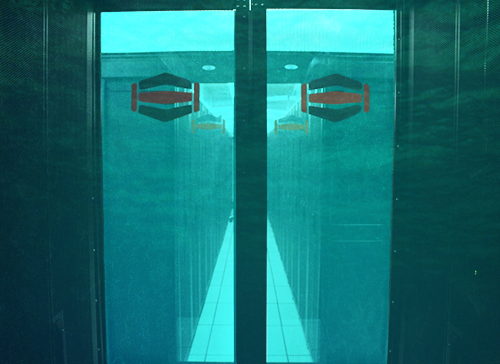
Water and electronics usually don’t mix; however, a radical new experiment from Microsoft is changing our thinking. Microsoft’s Project Natick just completed three-months of operating a functional data center underwater. The vessel was operated on the seafloor about half a mile off the Pacific coast of the United States. Watch the brief video below of the historic event:
Now before we all start replacing land-based data centers with 20,000 servers under the sea, let’s examine the pros and cons of deepwater data centers.
The Benefits of an Underwater Data Center
- Server racks get very hot. A data center’s air conditioning bill would make most people cry. Placing servers underwater would eliminate humidity and keep contents cool.
- More than 40% of the world’s population lives within 100 kilometers (62 miles) from the coast. Most of these are large cities. Microsoft is banking on a future that will require data resources located close to users. A data center close to the user will reduce latency and promote quicker responsiveness; many data centers are still in remote locations.
- Rapid provisioning is another benefit of these server capsules. The estimated time for a land data center construction is around 2 years; these underwater data centers can be deployed start to finish in 90 days.
- Free electricity generated by harvesting the energy from the movement of seawater.
The Pitfalls of an Underwater Data Center
- A sad fact of life is that hardware fails all the time. When something breaks, the logistics of submerging a staff to get to the facility for component fixing will be difficult, or outright impossible. Soon, a prerequisite to get on a data center’s IT staff may be a scuba diving license.
- These data centers would have to be built to go without maintenance for years, something that doesn’t seem feasible at this moment of time, especially if a leak forms. You can kiss those servers goodbye.
- Environmentally, Microsoft says Project Natick affected only a few inches of seascape. The New York Times stated that “they used acoustic sensors to determine if the spinning drives and fans […] could be heard in the surrounding water […] The clicking of the shrimp that swam next to the system drowned out any noise created by the container.”That’s great, for one server capsule. But what happens when Microsoft dumps thousands of these into the sea? And then what happens when thousands of companies follow suit? The ecosystem risk could be significant, and that’s without any problems like toxic materials or heavy metals leaking into the ocean. Also will the heat generated harm or alter the local marine life? These questions will likely be answered in the next few years.
Now I turn it over to you. This is interesting stuff, but is it a feasible idea worth pursuing? Looking forward to reading your comments.
[divider]
HostDime.com, Inc is a global data center infrastructure provider offering an array of cloud products from managed hosting servers to colocation services that cater to a range of clients, from entry-level to enterprise-level operations. HostDime owns and operates infrastructure and networks in seven countries, with its flagship facility in Florida, USA. Currently with a client base of more than 50,000, HostDime is one of the most reputable data center companies in the world.
Jared Smith is HostDime’s Content Strategist.
